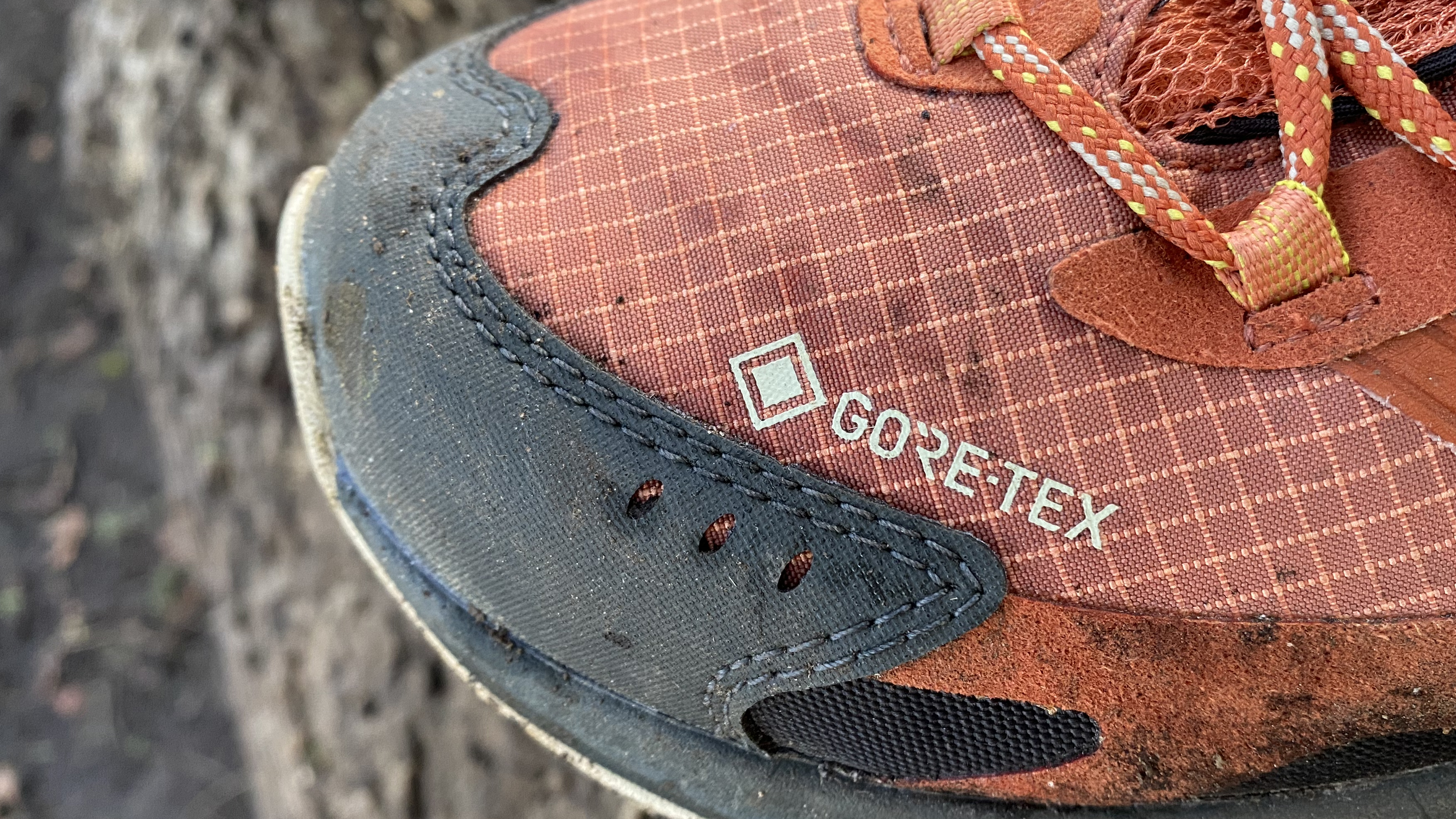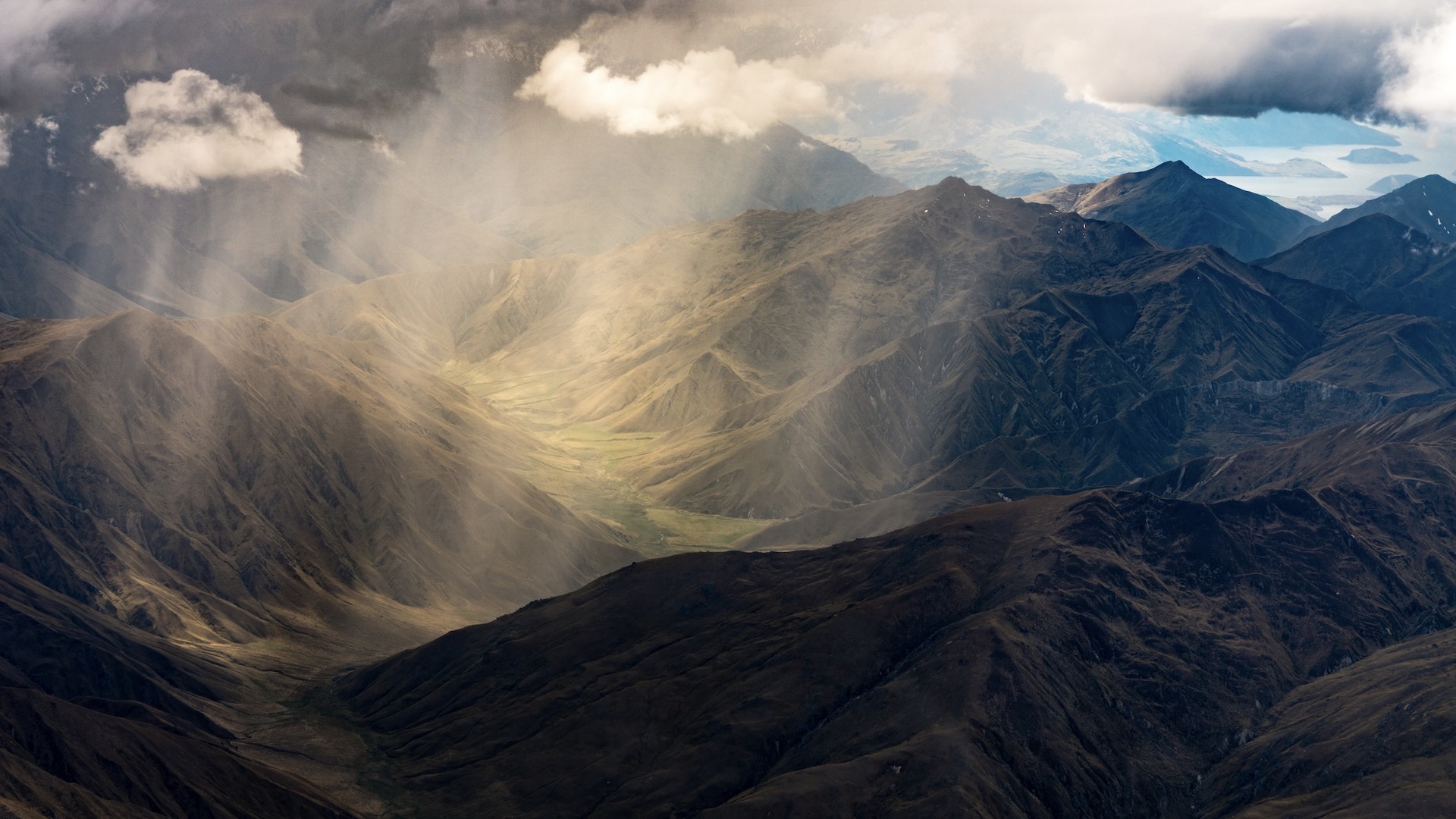Gore-Tex vs Sympatex: which is best for backcountry adventures?
It's Gore-Tex vs Sympatex: we consider the advantages and disadvantages of two leading waterproof, breathable fabrics

Gore-Tex vs Sympatex. These breathable waterproof membranes allow us to venture out into wet conditions in comfort, safe in the knowledge that our clothing will not only repel the rain but also allow moisture to escape from within, keeping us cool and comfortable into the bargain.
Gore-Tex needs no introduction. The all-conquering technical membrane is a mainstay in outdoor clothing the world over. The less well known Sympatex features in lifestyle clothing from European brands like Ortovox and Ziener. Both are used in a range of products for outdoors activities, including waterproof jackets, pants, gloves and footwear. So, which is the best?
To get to the bottom of which is best for different scenarios, our hiking gear expert weighed up the various features of Gore-Tex at Sympatex to arrive at her verdict.
Gore-Tex vs Sympatex: which should you choose?
For technical mountaineering and hiking clothing, Gore-Tex is a reliable choice and has a reputation for durability and performance in challenging conditions.
Sympatex features more prominently in lifestyle wear, is more comfortable and also kinder to the environment. For a general walking waterproof, it may be the better option.
| Row 0 - Cell 0 | Gore-Tex | Sympatex |
| Layers | Used in 2, 2.5 and 3 layer fabrics | Laminated to fabrics either on its inner surface or sandwiched between two fabric layers |
| Types | Various types of Gore-Tex exist for different purposes, such as the rugged Gore-Tex Pro or the lightweight Gore-Tex Paclite | Only on type of Sympatex which is used in various products |
| Waterproof rating | Gore-Tex has a Hydrostatic Head rating of 28,000mm, though this isn't the be all and end all when it comes to performance | Sympatex has a Hydrostatic Head rating of 45,000mm, which is very high |
| Breathability | Gore-Tex is much more breathable | Not as breathable as Gore-Tex |
| Windproofing | Both have strong windproof credentials | Both have strong windproof credentials |
| Fabric features | Gore-Tex has a reputation for robustness and durability and isn't quite as comfortable | Not quite as stiff, making it a more comfortable wear |
| Sustainability | Gore-Tex is dependant on plastics from petroleum-based sources, though it should last a long time. It's also very slow to biodegrade. | Sympatex is both biodegradable and recyclable |
Meet the expert

Living in Scotland and regularly hiking and running in the Scottish Highlands, Fiona knows the value of quality waterproofing. She's an outdoor gear expert with a huge passion for the wild places and has been testing waterproof jackets, pants, footwear and gloves for many years.
Today's best deals
What is Gore-Tex?
- The Gore-Tex membrane is designed to keep out water, while also allowing water vapour to pass to the outside
- The membrane is made from polytetrafluoroethylene (PTFE), which has tiny pores to let moisture escape

Gore-Tex is a well-known waterproof and breathable fabric membrane made by WL Gore & Associates. The history of the company dates back more than 50 years.
The Gore-Tex membrane is designed to keep out water, while also allowing water vapour to pass to the outside. The basis of Gore-Tex is a type of polytetrafluoroethylene (PTFE). The Gore-Tex membrane is created by stretching the PTFE to form an expanded version called ePTFE.
All the latest inspiration, tips and guides to help you plan your next Advnture!
The resulting membrane is microporous and has has many thousands of tiny pores. These tiny pores are smaller than even the smallest water droplet.
However, at the same time, water vapour, in the form of the body's vaporised sweat, is smaller than the pores so it can escape the inside of the membrane, which is why Gore-Tex is said to have such good breathability.
Gore-Tex is used by many brands such as Berghaus, Mountain Equipment, Rab, Arc'teryx and Salewa to create waterproof jackets, rain pants, gloves and footwear.
What is Sympatex?
- Sympatex is a waterproof, windproof and breathable membrane made from hydrophilic polyether-ester block copolymer
- Unlike Gore-Tex, the membrane is closed and doesn't have pores
- The membrane works by expanding and transporting moisture away through molecule chains
Sympatex is made by Sympatex Technologies GmbH, which was founded in 1986. The waterproof, windproof and breathable membrane is made from hydrophilic polyether-ester block copolymer.
It is a closed membrane rather than one that has pores, and this means that water can’t get in from the outside. However, the membrane can 'breathe' thanks to a chemical process, which is attributed to the hydrophilic nature of its components.
To explain, when there is a high level of moisture on the inside of the jacket due to the body’s heat and sweating process, the membrane expands, which allows moisture from inside to be absorbed and then transported out through molecule chains.
This means that the warmer and more humid it is inside the jacket, the more moisture the membrane transports out.
Sympatex is also used by different brands, such as Ortovox, Bleed, Elkline, Lagoped, Ziener and Richter footwear. These companies might be more familiar to Europeans, compared to Brits and Americans.

The layers
- Both are used as part of a layered or laminated design
- The thickness of the layering depends on the level of protection and durability required
Both Gore-Tex and Sympatex are used in waterproof garments as part of a layered, or laminated design. Sympatex is laminated to fabrics either on its inner surface or sandwiched between two fabric layers. This is usually called a three-layer laminate.
It’s the same with the Gore-Tex membrane, which is used in two-layer, two-and-a-half-layer, three-layer and z liner constructions, as well as insulated garments.
The layering can be thinner or thicker to provide less or more protection from abrasion, durability and weather resistance. For example, you'd expect a running jacket to be thinner than a mountaineering hardshell.
Types of membrane and uses
- There are various types of Gore-Tex for all manner of different purposes
- There's only one type of Sympatex, which is used in waterproof jackets, ski gloves and footwear
Gore-Tex is created in different formats for different activities, including lightweight and packable Paclite; Gore-Tex Pro, which is durable and also breathable; and Gore-Tex Active, which is waterproof but also the most breathable of the Gore-Tex options.
There appears to be one type of Sympatex, which is used in different layers for various products, such as waterproof jackets, ski gloves and waterproof footwear.

Waterproof rating
- Sympatex has a higher hydrostatic head rating of 45,000mm compared to Gore-Tex's 28,000
- In theory, this makes it more waterproof, though other factors have an influence on a fabric's performance, such as breathability
Waterproofing is measured as a hydrostatic head rating. Hydrostatic head is the standard used to quantify the level of waterproofness of different textiles. It is measured by applying water pressure to the surface of a fabric and identifying at what point the fabric allows water to seep through.
A rating of more than 20,000mm is usually considered to provide adequate waterproofing in light to heavy rain.
Gore-Tex is rated as 28,000mm, while the Sympatex website states the membrane has a rating of more than 45,000mm.
But just because a fabric has a higher hydrostatic head rating doesn’t mean it’s better for outdoor activities. Remember, there is a breathability factor, too. A jacket might be highly waterproof, but not breathable, which means it will collect moisture inside when you sweat.
Breathability
- In terms of breathability, Gore-Tex is the clear winner
Breathability is measured as a rating of the number of grams of water vapour that escape a fabric per 24 hours.
The most breathable versions of Gore-Tex is Gore-Tex Pro either in 2 or 3 layers. They both have a breathability rating of 25,000 g/m2/24 hours. In comparison, Gore-Tex Performance Shell is 17,000 g/m2/24 hours and Gore-Tex Paclite is 15,000 g/m2/24 hours
Other measurements for breathability include RET – resistance to evaporative heat transfer – and the lower the RET value, the better.
According to information we could find, the newest Gore-Tex Pro has an RET value of <9, which is a bit less breathable than older PRO fabrics with RET values of around 6. range. Meanwhile, Gore-Tex Paclite has an RET of <6.
The only breathability measurement for Sympatex is RET and it is said to be 0.5.
Windproofing
Both Gore-Tex and Sympatex offer good windproof qualities and give protection whether it's breezy or very windy.

What’s the fabric like?
- Gore-Tex has a reputation for robustness and durability
- Sympatex isn't as stiff and is generally a more comfortable fabric
- Gore-Tex appears in many performance products, whereas Sympatex is often used in "lifestyle" clothing
The Gore-Tex ePTFE membrane appears to be a more robust and extremely durable fabric, while Sympatex is described as being a more “comfortable” fabric. Sympatex doesn't feel as stiff as Gore-Tex so many people find it easier to wear, especially against the skin.
When considering the apparel made of Gore-Tex and Sympatex, it appears Gore-Tex is used more widely in technical products, such as hiking and mountaineering jackets. Gore-Tex is also widely used for skiing apparel and in hiking and mountaineering boots.
Sympatex seems to be more widely used in apparel that is "lifestyle" or demands less technical attributes. Products are aimed at urban and country walkers, rather than for mountain wear. Sympatex is utilised in some European children's outdoor apparel ranges, as well as ski gloves.
What about the environment?
- Sympatex scores higher for sustainability as it is biodegradable and recyclable
- Gore-Tex is dependant on plastics from petroleum-based sources, a key driver of climate change
- However, Gore-Tex is highly durable so should last a long time, though it's also very slow to biodegrade
It's when considering the eco credentials that we spot the biggest difference between Gore-Tx and Sympatex.
According to the website Eco Consensus, which assesses the statistics and facts surrounding the apparel industry, Gore-Tex is durable, which in one way is good for our planet. Long-lasting items can be said to be green because people will need to replace items less frequently. However, a major negative is that the fabric is very slow to biodegrade.
Eco Consensus continues, reporting that while Gore-Tex also has a long history of high standards, particularly in chemical and waste management, synthetic products derived from petroleum-based sources are a leading cause of climate change.
Gore-Tex is dependent on plastics, from the ePTFE membrane to the nylon and polyester face fabrics.
Eco Consensus states: "Plastic-based products are simply incompatible with the natural environment and are increasingly proving to be dangerous to living organisms.”
Another issue for the outdoors industry is climate-damaging Durable Water Repellency (DWR) treatments. DWRs are criticised for PFCs.
Gore-Tex scores better in this area because its waterproof fabrics are made with PFC-free DWR products.
You can find out more about Gore-Tex’s sustainability pledges.
On the other hand, Sympatex can claim to be an eco-friendly fabric technology because its components are natural and 100% recyclable.
Sympatex is made of polyether/ester, rather than PTFE. The membrane comes with proof of its eco credentials including Oeko-Tex Standard certification, which rates textiles for harmful substances and a bluesign certification , which guarantees the product was manufactured in an environmentally friendly way.
Sympatex states: “For the production of our membrane we use a polyester-based plastic. It's a material that can be recycled easily like a PET bottle. In the future, we want to use only recycled material for the production of new materials.”
When considering outdoor clothing and accessories, eco and ethical watchdog Ethical Consumer states: “Look for Sympatex membranes (polyether-ester – PE) or membranes made of polyurethane. These alternatives are biodegradable and recyclable.”
Check out the sustainability section on Sympatex website.

The detailed verdict
- Gore-Tex is preferable for technical adventure clothing
- Sympatex is more comfortable and well suited to general everyday wear
- Sympatex also scores higher in terms of sustainability
There is no straightforward answer to this. The fabrics appear to perform in a similar way, although it’s widely claimed Gore-Tex is more durable. Gore-Tex has also been around for longer and is used by a greater number of brands that many people trust, such as Berghaus, Rab, Mountain Equipment, Arc’Teryx and Salewa.
If you are looking for a more technical jacket for hiking, mountaineering or skiing, the chances many of the major brands will have used Gore-Tex to make their clothing and footwear collections.
There are alternatives to Gore-Tex, such as eVent, Paramo, Pertex Shield, The North Face FutureLight and Polartex Neoshell.
However, we are considering Gore-Tex versus Sympatex in this article. Sympatex is not so commonly available in more technical products, so your decision on which fabric to go for will likely be dictated by the use of the item, whether it's a jacket or footwear.
A search for Sympatex products reveals it is used more frequently in Europe and for 'lifestyle' type apparel, country and urban walking, as well as children's outdoors clothing, ski gloves and some footwear. Brands include Ortovox, Bleed, Elkline, Lagoped, Ziener and Richter footwear.
Sympatex is a fabric that feels more comfortable to wear, especially against the skin, and it does score well on waterproofing and breathability.
In the end, it will come down to price, use, brands you like and the look and fit of products made with either Gore-Tex or Sympatex.

Fiona Russell is a widely published adventure journalist and blogger, better known as Fiona Outdoors. She is based in Scotland and is an all-round outdoors enthusiast with favorite activities including trail running, mountain walking, mountain biking, road cycling, triathlon and skiing (both downhill and backcountry). Aside from her own adventures, Fiona's biggest aim is to inspire others to enjoy getting outside and exploring, especially through her writing. She is also rarely seen without a running skort! Find out more at Fiona Outdoors.
